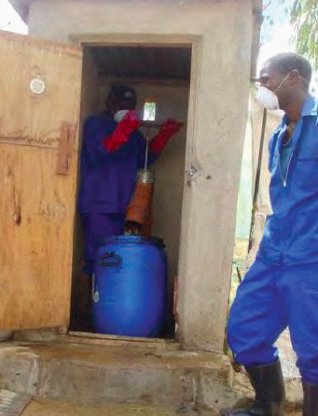Are studies underestimating the effects of sanitation on child nutrition?
Summary of published letter1
 A recently published letter in The Lancet comments on a study published in the same publication by Pickering et al (2015), who studied the effects of a community-led sanitation intervention in Mali. The authors used short-recall diarrhoea as the main outcome, but due to the well-known flaws with this indicator, they chose child anthropometric indicators, particularly growth outcomes, as secondary outcomes. As the exposure to improved sanitation was fairly short in this study (6-24 months) and the study focused on children aged 0-59 months, the relevant statistical tests mixed together younger children (for whom sanitation plausibly benefits linear growth) with older children (for whom sanitation plausibly offers little or no benefits). The findings from Pickering et al were consistent with this so-called ‘exposure bias’, showing effect of sanitation interventions on linear growth for younger children aged 0-24 months only (with the largest effect on children aged 0-12 months). Since the SHINE project findings (Prendergast et al, 2015) show that environmental enteropathy starts in utero through maternal infection, full exposure to improved sanitation facilities ought, theoretically, to include children whose mothers had sanitation for the full duration of their pregnancy, if not before. The author suggests that these findings collectively indicate that future sanitation intervention trials should consider focusing on child growth as the primary indicator of interest; record when toilet facilities were first put into use (to measure duration of exposure); and focus on assessing the nutritional effects on younger children (aged 0-2 years), including exposure in utero.
A recently published letter in The Lancet comments on a study published in the same publication by Pickering et al (2015), who studied the effects of a community-led sanitation intervention in Mali. The authors used short-recall diarrhoea as the main outcome, but due to the well-known flaws with this indicator, they chose child anthropometric indicators, particularly growth outcomes, as secondary outcomes. As the exposure to improved sanitation was fairly short in this study (6-24 months) and the study focused on children aged 0-59 months, the relevant statistical tests mixed together younger children (for whom sanitation plausibly benefits linear growth) with older children (for whom sanitation plausibly offers little or no benefits). The findings from Pickering et al were consistent with this so-called ‘exposure bias’, showing effect of sanitation interventions on linear growth for younger children aged 0-24 months only (with the largest effect on children aged 0-12 months). Since the SHINE project findings (Prendergast et al, 2015) show that environmental enteropathy starts in utero through maternal infection, full exposure to improved sanitation facilities ought, theoretically, to include children whose mothers had sanitation for the full duration of their pregnancy, if not before. The author suggests that these findings collectively indicate that future sanitation intervention trials should consider focusing on child growth as the primary indicator of interest; record when toilet facilities were first put into use (to measure duration of exposure); and focus on assessing the nutritional effects on younger children (aged 0-2 years), including exposure in utero.
References
1 Derek Headey. (2016) Are studies underestimating the effects of sanitation on child nutrition? Lancet Global Health. Published Online?February 1, 2016 dx.doi.org/10.1016/ S2214-109X(15)00295-8.
Pickering AJ, Djebbari H, Lopez C, Coulibaly M, Alzua ML. Effect of a community-led sanitation intervention on child diarrhoea and child growth in rural Mali: a cluster-randomised controlled trial. Lancet Glob Health 2015;3: e701–11.
Prendergast AJ, Rukobo S, Chasekwa B, et al. Stunting is characterised by chronic inflammation in Zimbabwean infants.?PLoS One 2014; 9: e86928.

